Success Story – Hans Weber Maschinenfabrik GmbH: Time is Money
Hans Weber Maschinenfabrik GmbH in Kronach, Germany uses classmate PLAN by simus systems to calculate almost all their parts – and therefore saves 70 percent of time spent on calculations.
The expert in grinding technology and plastic intruders goes one step further: Even at the initial design stage, a simple cost comparison already leads to economical designs ready for production.
After building the first automatic wood sander in 1913, Hans Weber founded a machine factory in Kronach, Germany in 1922. The first belt grinding machines followed in 1955 – in 1960 the first extruders were manufactured for the plastics industry. The company is still active in the third and fourth generation in both areas and is leading in this technology in the field – proven by numerous patents as well as an own technical center. With approximately 200 sanding and grinding machines produced per year, the pressure on production costs from abroad is fairly high. The number of single parts is ten times higher compared to the 130 extruders and represents the lion’s share of the 150,000 active parts produced in-house by the mechanical engineering company and its 450 employees. Due to the variety of materials, customized finished products and design versions single parts and small batches are produced up to a batch size of ten at a real net output ratio of 95 percent. The range varies from tooth forming of distribution gearboxes to turned and milled parts with a diameter of 5 to 600 millimeters, sheet metal production using edges and lasers to welding constructions and surface finish treatments.
Ensuring Cost Effectiveness
“In order to maintain control over complex manufacturing in economical terms, each part goes through detailed cost calculation process in the planning stage,” says Daniel Greiner, Head of Time Management. He and his team create approximately 16,000 word schedules, 7,500 of which originate from changes of existing parts. About 50 percent of created plans contain sheet metal parts which were machined using laser and edging. Furthermore, around 400 quotes for repairs and general overhauls of existing machines are added to this number. The process was supported by self-developed calculation software for sheet metal production on a laser system by Trumpf which also allowed for predictions on utilization. Without a direction connection to the ERP system for queries on current costs of raw materials, the tool’s use was limited and required consulting with purchasing, design, work scheduling and time management numerous times. The costs of the other parts were determined using a spreadsheet. A new solution was therefore sought which would also open up the opportunity for additional transparent cost control in design and the use across departments – without causing additional work for the designers.
Successful Evaluation
Daniel Greier received the critical tip from Stefan Kraus, the company‘s CAD/CAM administrator. He got in touch with simus systems in Karlsruhe, Germany, the provider of an own software suite to structure, clean and maintain large volumes of technical data. It also contains classmate PLAN, a module which automatically generates work schedules from CAD data. After adding economic figures, such as from ERP systems, the software solution automatically generates calculations of the required parts. The web based tool classmate easyFINDER visualizes the data including a 3D preview of the part accessible in the company worldwide. First tests of typical Weber parts showed positive outcomes. After a visit on site, the decision for a pilot project was made: “We tested the automatic calculation on 50 selected parts so that both sides could be reasonably sure that the project would be successful for our entire range of parts,” says Daniel Greiner.
Extensive Induction Project
After signing the contract, the introductory project was launched in August 2017. It took about one year until the software was ready for a trial run after the kick off and two validation workshops. In this phase, the software was fine-tuned and additional features were added for more convenience: “Before generating new calculations, classmate PLAN should search for up-to-date values from the post calculation and adopt existing cost data,“ says Daniel Greiner, who was the lead of the induction project. “For this 3D CAD system by PTC, we created an interface,” Stefan Kraus says. The calculation for assemblies was extended and contour detection was refined for machining sheet metal parts. Simultaneously to the induction in October 2018, the existing ERP system was replaced with APplus by Asseco so that further interfaces and adjustments were required. “Finally, we achieved everything we set out to do,“ Daniel Greiner concludes and adds,
“The use of calculation data across departments, automatic calculation based on detailed working plans which are followed in production – and all this without any additional work for the design department.“
Companywide Search Engine
The designers can check their parts for costs using the classmate easyFINDER. It allows the search for models, features or partitions as well as text-based searches for keywords, single values or value and displays them as a preview picture. “Cost drivers are easily recognizable by highlighting in color and can be examined straight away“, Stefan Kraus says. “Sometimes a different bore diameter is enough to reduce production costs drastically.” The cost comparison of similar parts which are displayed side by side opens up new opportunities.
“Designers can see which variant would be the cheapest option for their task without any additional work, especially checking back with Controlling, Purchasing or Time Management,“
the CAD/CAM Administrator says. Determining and analyzing cost drivers in design support economical thinking in building blocks. All departments including Controlling access required information on parts using easyFINDER and therefore gets a quick and precise impression using 3D visualization. A quick and transparent way of working as well as the common data pool led to being widely accepted within the company.
Automatic Calculation Lightens the Load for Time Management
All these measures lighten the load for Time Management and shorten lead times in production planning. For the 19,000 calculations performed, 5,000 assemblies and 14,000 parts were analyzed successfully by classmate PLAN right away.
“Particularly in the work processes of lasing, edging and drilling, we are saving 70 percent in calculation time,“
Daniel Greiner rejoices. Calculating assemblies also means further relief, as the predicted production costs of newly designed parts and the values of existing parts from the ERP system can be determined and depicted together. Dr. Markus Weber, who had defined all milestones of the project as the CEO takes stock:
“By using classmate, cost and production-optimized design was further driven forward in the house of WEBER. Another positively rated aspect is the constantly growing data pool of the application which can be used in a transparent way across departments.“
The freed up resources advance the digitalization of processes. Creating working plans will be automated further in connection with the ERP system. The detection and analysis of welding assemblies by the program is also advanced. “classmate PLAN is a software that never reaches any limits,“ Daniel Greiner says.
Image: Hans Weber Maschinenfabrik, Kronach, Germany

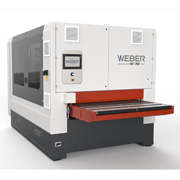
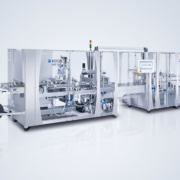
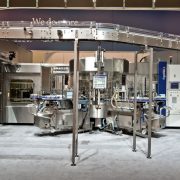
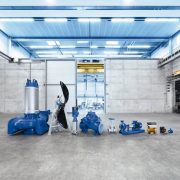
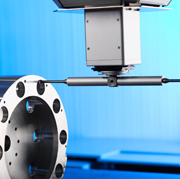 Theegarten
Theegarten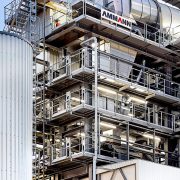
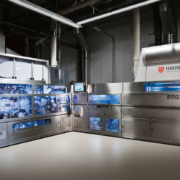 Hauni Maschinenbau GmbH
Hauni Maschinenbau GmbH
